Adventurous Kate contains affiliate links. If you make a purchase through these links, I will earn a commission at no extra cost to you. Thanks!
Staying at an agriturismo is something that I prioritize on almost every trip I take to Italy. There’s nothing like relaxing in the Italian countryside, dining on outstandingly fresh produce, and living la dolce vita — far from the cities.
Agriturismi (the plural of agriturismo) are Italian farms that double as bed and breakfasts. They are found in every part of the country, and they’re a hugely popular way for Italians to travel.
Italian farm holidays have caught on with foreign tourists, and Barbara Kingsolver wrote about visiting agriturismi in Animal, Vegetable, Miracle, her bestselling memoir about eating only local food for one year.
So take it from me, your Italy-obsessed friend — you will love staying at an agriturismo. It’s just the right amount of Italy off the beaten path. In fact, your agriturismo stay might end up being the highlight of your trip to Italy!
But I know it might sound a bit complicated. How do you even book one of these places? How can you tell it’s a good one?
Read on for how to find the agriturismo that’s perfect for you.
Table of Contents
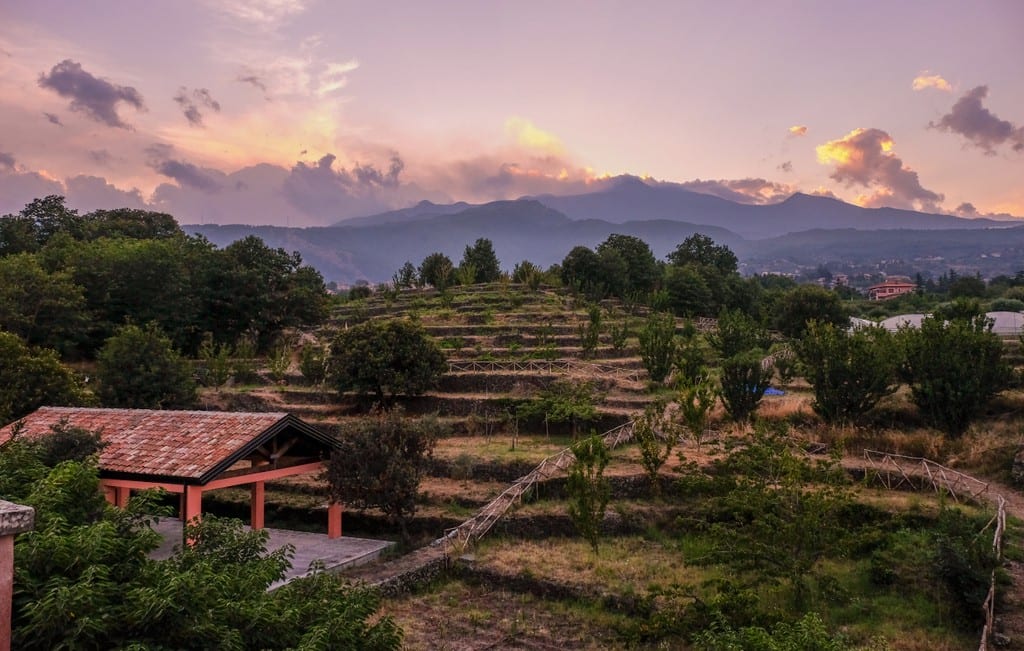
What is an agriturismo?
An agriturismo is a farmstay in Italy — a small, independently owned working farm where tourists can stay overnight.
In the period of industrialization post-World War II, many farmers in Italy were packing up and moving to the cities to make ends meet. Farms were falling into disrepair, and the Italian government soon realized this was putting their beloved food traditions at risk.
In 1985, Italian lawmakers passed legislation creating a legal definition of the word agriturismo and providing funds for farm estates who were willing to convert them into accommodation. And it worked like a dream. Soon these farmers became innkeepers, introducing visitors to rural Italian life.
Today, Italian agriturismi are a beloved tradition — and they’re incredibly diverse. You can find agriturismi at all price points, from very cheap and simple guesthouses that look like you’re staying in a bare-bones attic to five-star luxury properties with spa treatments and a concierge.
Usually, though, most of them are small farms focusing on agriculture. (This is a big difference from American farms, which tend to be much larger and focused on livestock. Most likely the farm animals you’ll see in Italy will be dogs and cats!) I find most agriturismi to be wonderfully unpretentious.
Sometimes they can be a bit bigger and more upscale — I’ve stayed at two agriturismi that were actually wine resorts: Isola del Sasso in Sasso Marconi, Emilia-Romagna, and Agriturismo Baglio Donnafranca in Marsala, Sicily. They didn’t have as much of a family feel, but they had fabulous local food and wine.
And while you might picture a Tuscan farmhouse set among olive groves, you can find agriturismi in every corner of Italy. You can find agriturismi with terraced vineyards tucked into the mountainous areas like Valle d’Aosta, just as you can stay at an agriturismo a short walk from the sandy beaches of Basilicata. I’ve even stayed at multiple agriturismi in the shadow of volcanoes!
Just know that they sometimes go by different names in different regions — an agriturismo is often called a masseria in Puglia, a poggio in Tuscany, or a baglio in Sicily.
Some agriturismi offer activities — horseback riding, bike rentals, cooking classes — but the majority of them are simple places providing a relaxing place to stay and excellent food.
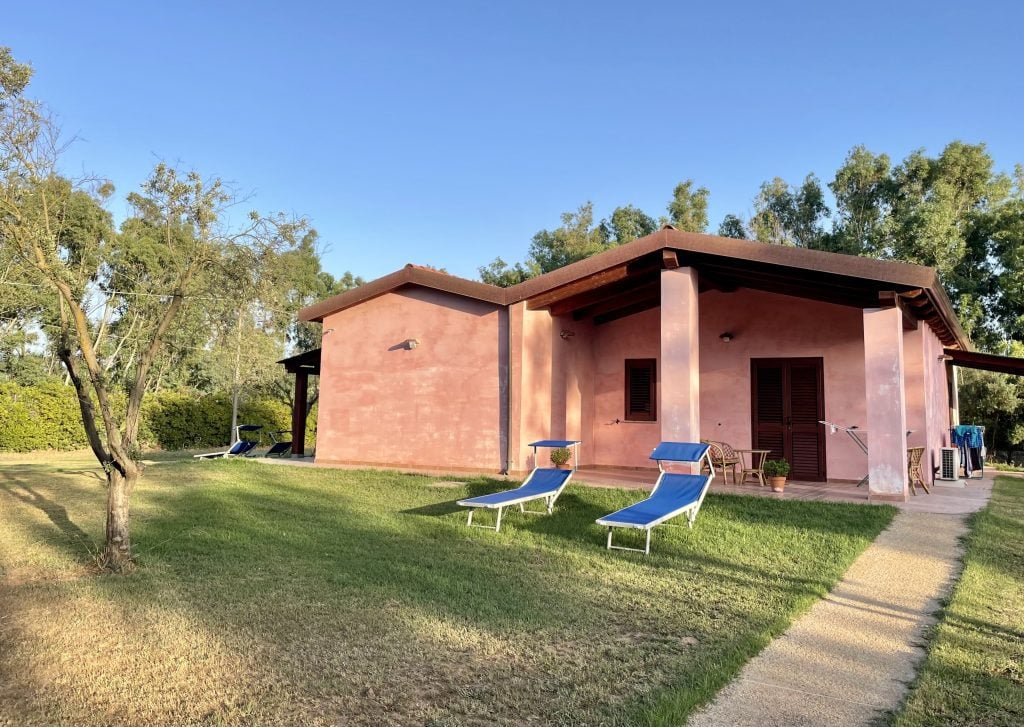
Why stay at an agriturismo?
Anytime I’m staying in Italy for a week or longer, I try to book an agriturismo for at least a few nights. Here’s what I enjoy about visiting them:
A break from Italy’s frenetic cities. So many people travel to Italy and only visit cities — Milan, Venice, Florence, Rome, Naples, and they’re off again. Rural life is so different — it’s calm, it’s peaceful, and the air smells fantastic.
Outstanding farm-to-table cuisine. Agriturismi usually serve dinner and breakfast made from local produce: their own and and their neighbors’. Those eggs were probably laid this morning, that olive oil was harvested from those olive trees, and that limoncello has been fermenting on a pantry shelf for months!
Supporting a small, independent business. Wouldn’t you rather put money into a local family’s pocket than make some CEO richer? That’s what you do at an agriturismo.
Value for money. You can get a night’s stay plus a fantastic dinner and breakfast, often for a similar price for just a hotel in one of the big cities. Amenities like swimming pools are often part of the stay.
No worries about drinking and driving. When you’re eating at the place where you’re sleeping, you can indulge in all the homemade wines and digestivi without having to have a designated driver.
Personal connections. When staying at an agriturismo, you can often get to know the owners a bit, which is nice. (Though that usually depends on how well you can communicate!)
Great for families with kids. Agriturismi cater especially well to families — they’ll put extra beds in your room and let the kids play outside while you enjoy your multi-course feast. Some are especially kid-oriented with playgrounds.
Souvenirs. You can almost always buy some of their own products to take home with you — the agriturismo’s own olive oil, wine, and digestivi.
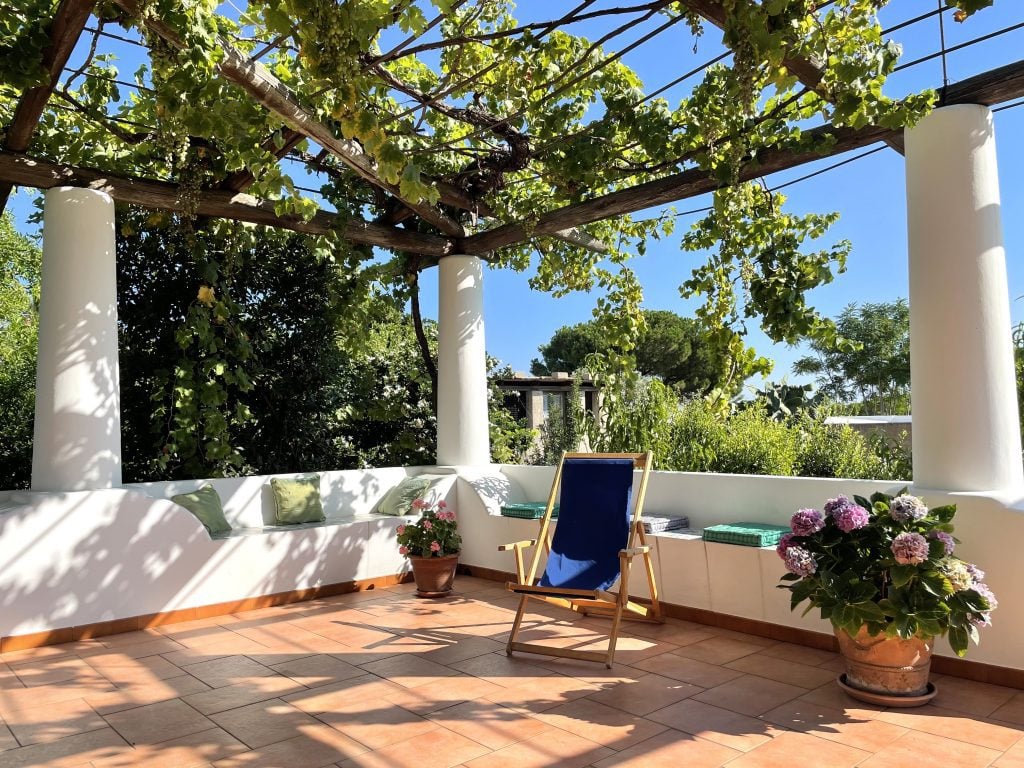
How to Book a Stay at an Agriturismo
Can you find agriturismi on regular hotel booking sites? Yes! I usually find mine on Booking.com. When searching on Booking, you can tick the box “Farm Stay” but it doesn’t always line up perfectly — sometimes agriturismi will be labeled as “bed and breakfast” instead.
I also Google a LOT more than usual. This is the best way to find booking platform-averse agriturismi — and how I found Agriturismo Sardo in Santa Teresa Gallura, Sardinia, that served the traditional roast suckling pig that Charlie wanted to try.
Agriturismo.it is home to the greatest selection of agriturismi in Italy. This is a great resource for figuring out the fine details of the place where you’re staying. It’s easy to segment by the kind of environment and the amenities.
You can also find agriturismi on Airbnb. Make sure you tick the box “Farm Stay” and be careful about the extra fees that get added.
Either way, I always make sure I look at the agriturismo’s website before booking. That will give you as much information as they have (even if it’s only in Italian!).
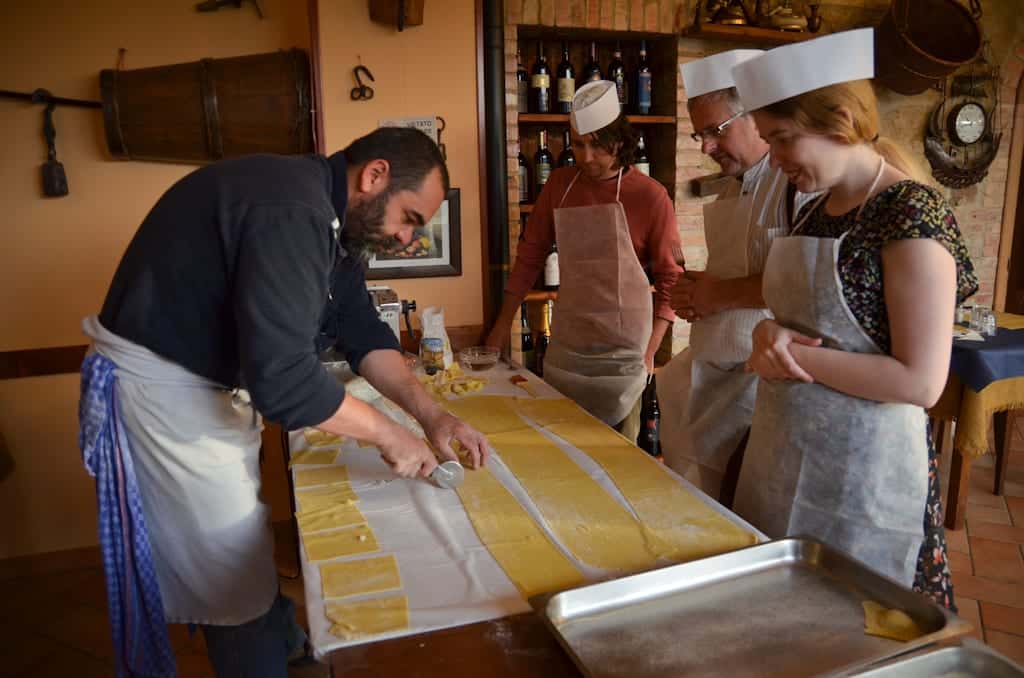
Book a Group Tour to an Agriturismo
G Adventures offers a few “Local Living” tours in Italy where you stay at an agriturismo for a week and explore the local region. They offer activities like cooking classes, hikes, and wine tastings.
Back in 2013 I went on a media trip for their Southern Tuscany tour, which I enjoyed immensely but they no longer offer.
Today G Adventures is offering Local Living tours in San Gimignano in Tuscany, and on the Amalfi Coast and in Sorrento, both near Naples in Campania.
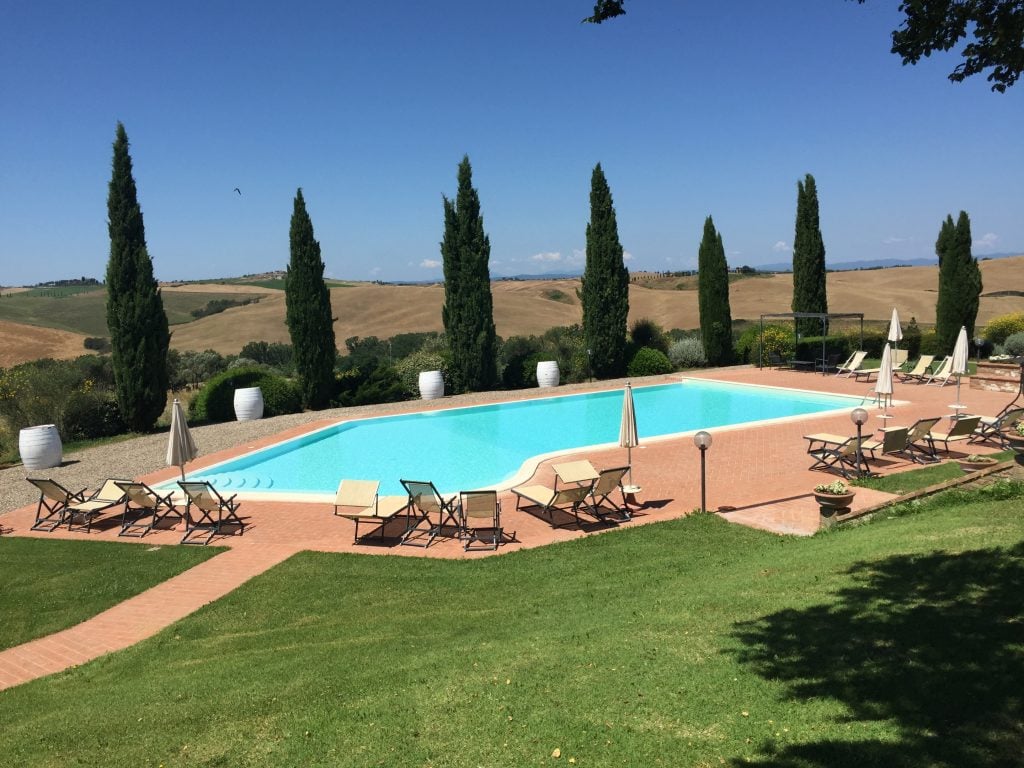
How to Choose the Right Agriturismo
Choosing an Italian agriturismo is different from choosing a hotel or guesthouse because of the importance of food. I research agriturismi by starting with what they do for food, then fanning outward.
Start with food. Does this agriturismo serve meals? Does it serve meals for breakfast, lunch, and dinner, or just some of the meals? Does it serve meals only some nights of the week and not others? Are there half board and full board options available? Is dinner served at a certain time?
After making sure they serve dinner, I read a LOT of reviews on Google, looking at photos of the food and what people have to say. (Tip: Italians tend to be harsh in their reviews. If a place rates 4.2 or better, that’s probably a great place.)
Next, take a look at the accommodations. Are you in a main building, or separate? Do you have your own private bathroom? What kind of amenities are on-site? Think swimming pool, outdoor lounge areas, activities, etc.
Be sure to ask about air conditioning if you’re visiting in the summer, and heating if you’re visiting Southern Italy in the winter. I nearly froze at an agriturismo in Sicily during a cold spell in February until they provided us with a space heater and extra blankets!
Next, take a look at payments. How do they take payments? Will you be able to pay with a credit card, or do they require a bank transfer for your deposit? Do they only take cash?
(If you’re a frequent traveler, I recommend getting an account with Wise, which gives you bank accounts in several currencies and makes international transfers easy.)
Finally: what’s the location like? How do you get there? How far are they from the airport? Will you be arriving after dark? If you’re not driving, will you need a pickup? What will you be able to visit within a 90-minute drive?
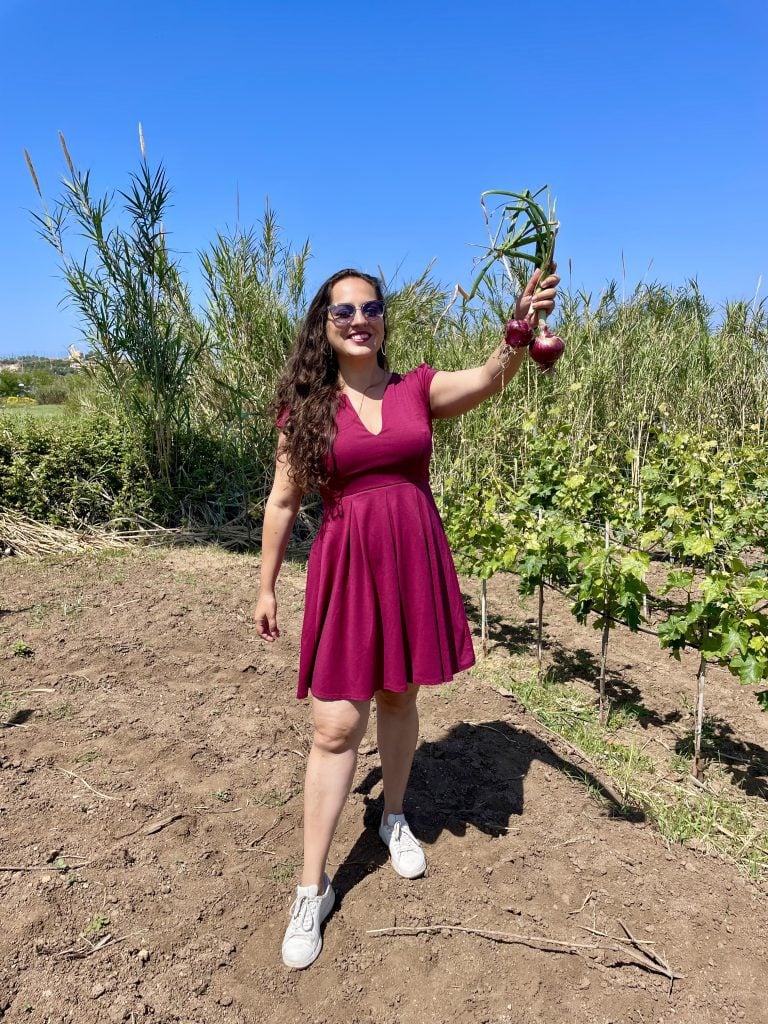
Agriturismo Food
For me, the most important aspect of staying at an agriturismo is the food. I always try to stay at an agriturismo that serves dinner.
Most agriturismi served a fixed menu for the day. (This is one reason why it’s smart to contact them ahead of time if you have dietary restrictions.)
Usually an agriturismo meal starts with appetizers like a tagliere (plate of meat and cheese) with olives or bread, followed by the primo piatto (pasta or risotto course), secondo piatto (meat or fish main course) served with contorni (vegetable side dishes), followed by dolce (dessert), caffe if you’d like, and digestivi (digestive liqueurs). Wine and water are served throughout.
Of course, every agriturismo is a little bit different. Many provide accommodation but cater primarily to diners, like Agriturismo Il Cucchiaio di Legno in Orta San Giulio, Piemonte, and Isola del Sasso in Sasso Marconi, Emilia-Romagna.
And then there’s breakfast. In general, I tell people not to get too excited about breakfast in Italy. As much as Italians care about food, breakfast is pretty low-key. You’ll usually have a few average cakes and a crostata or two, some fruit and yogurt, maybe eggs. But some agriturismi make breakfast a bit more memorable.
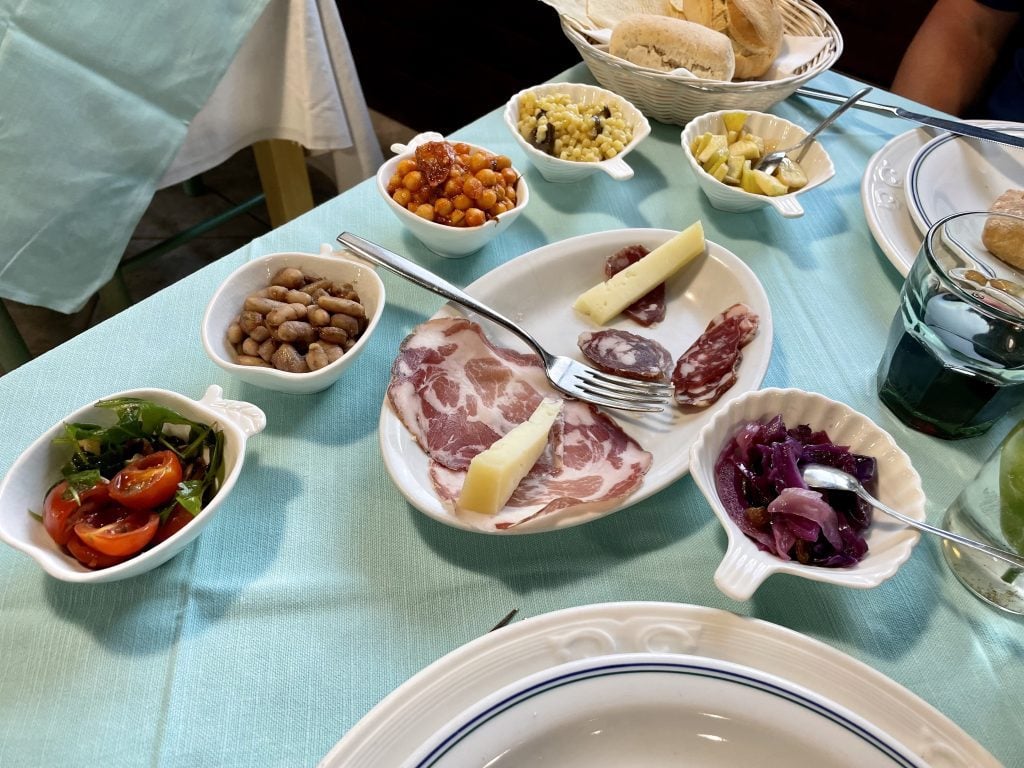
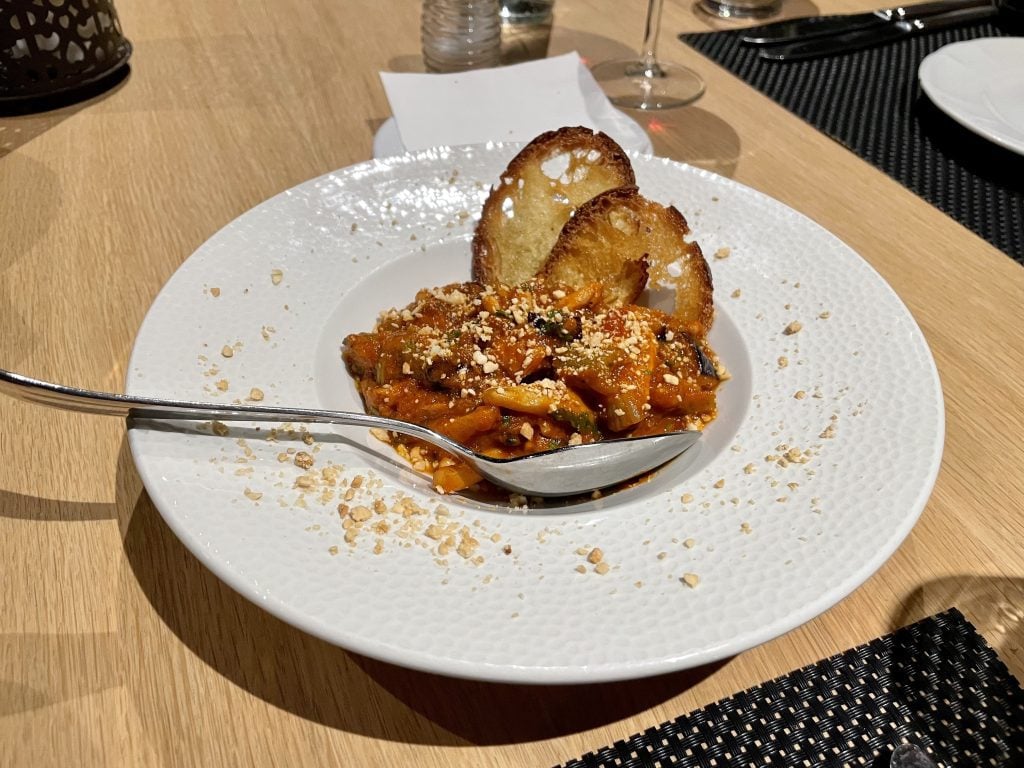
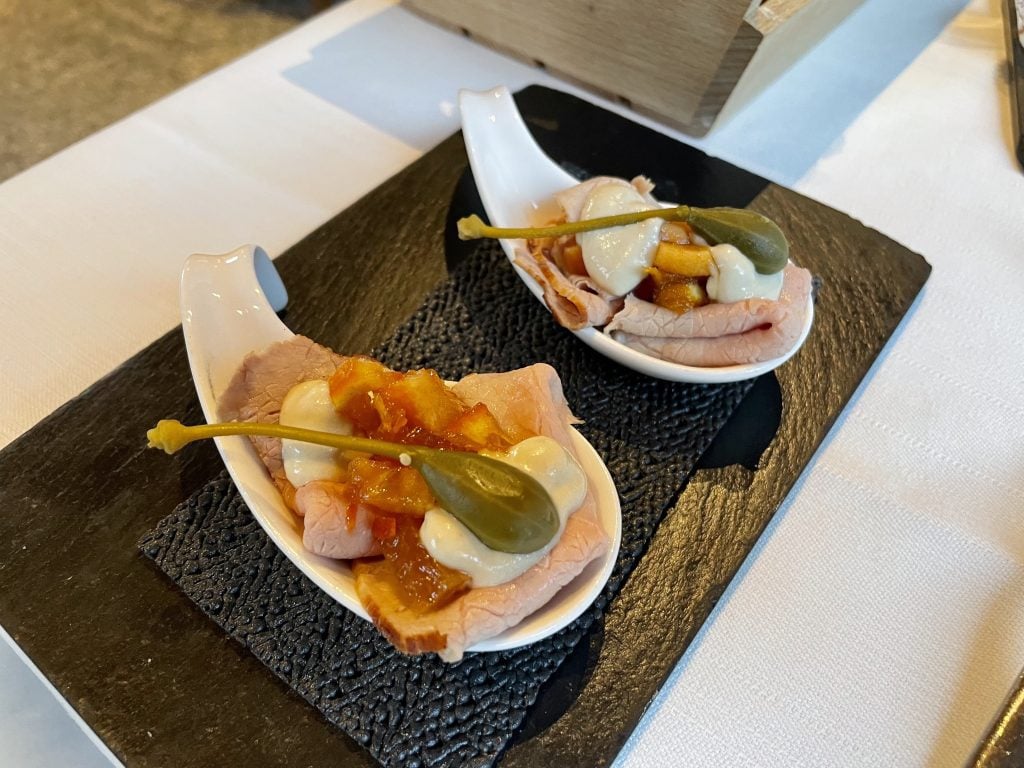
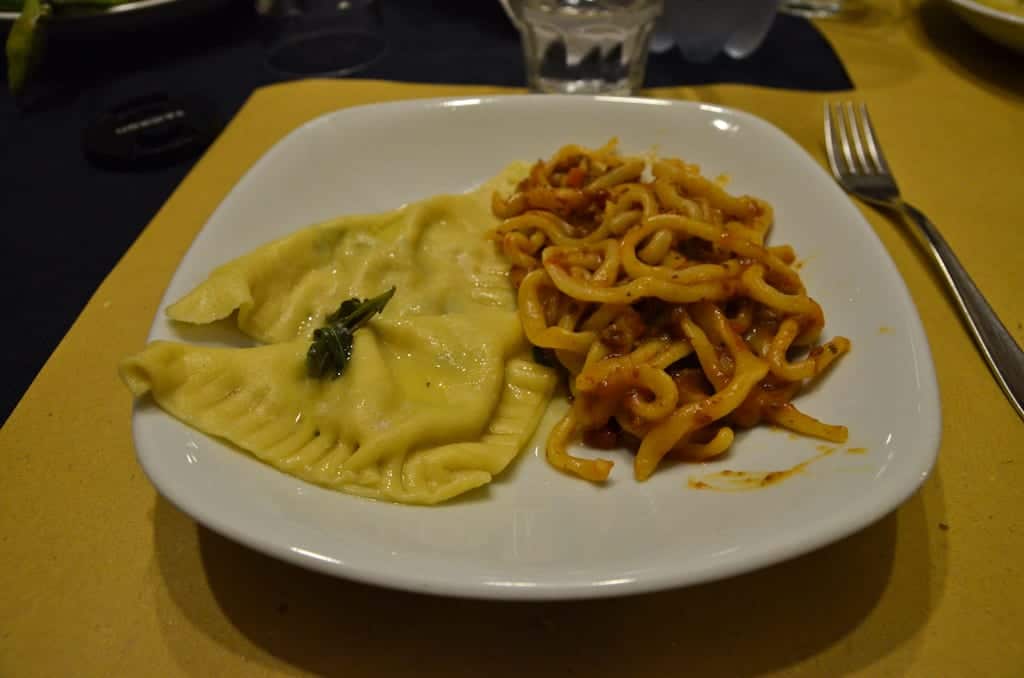
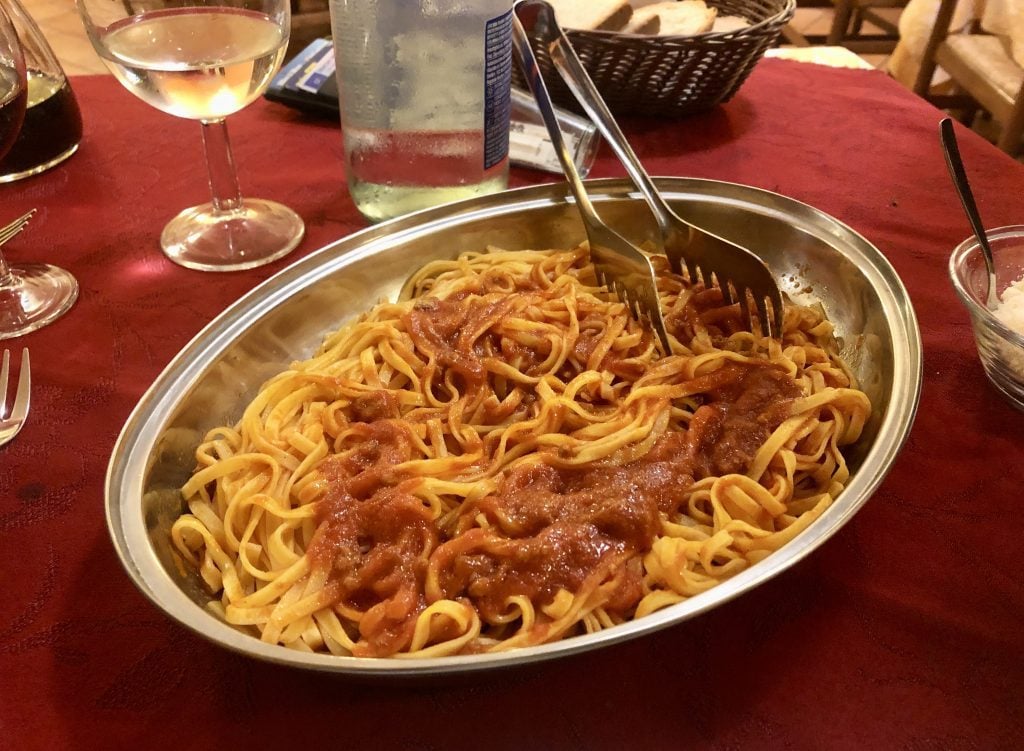
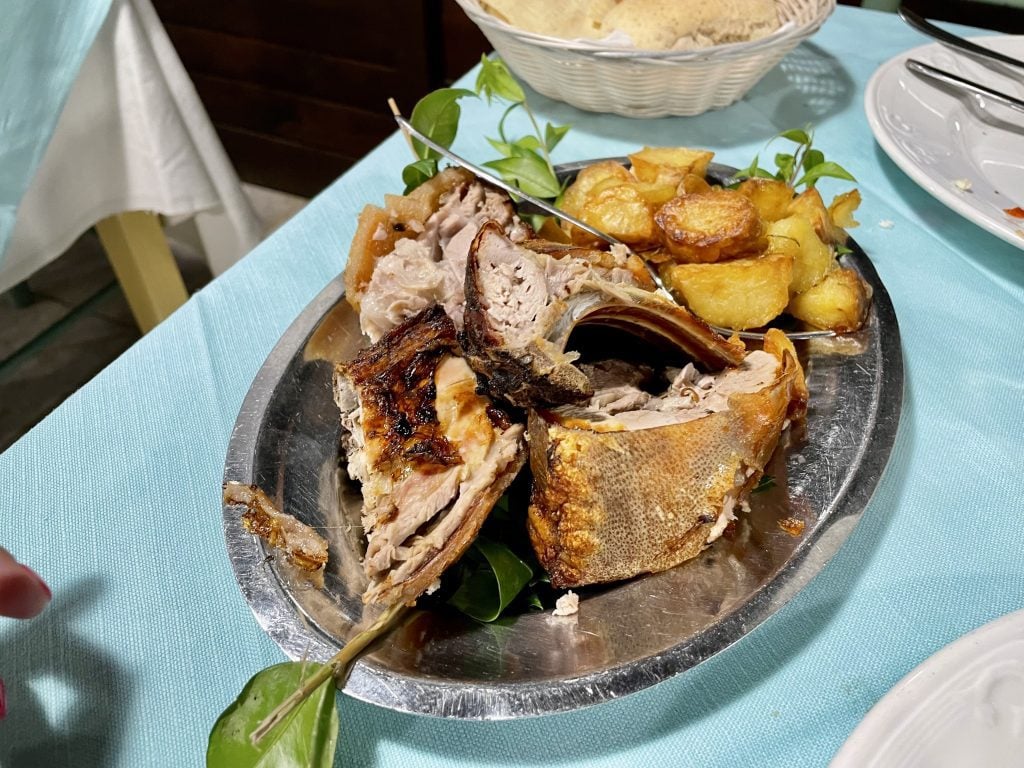
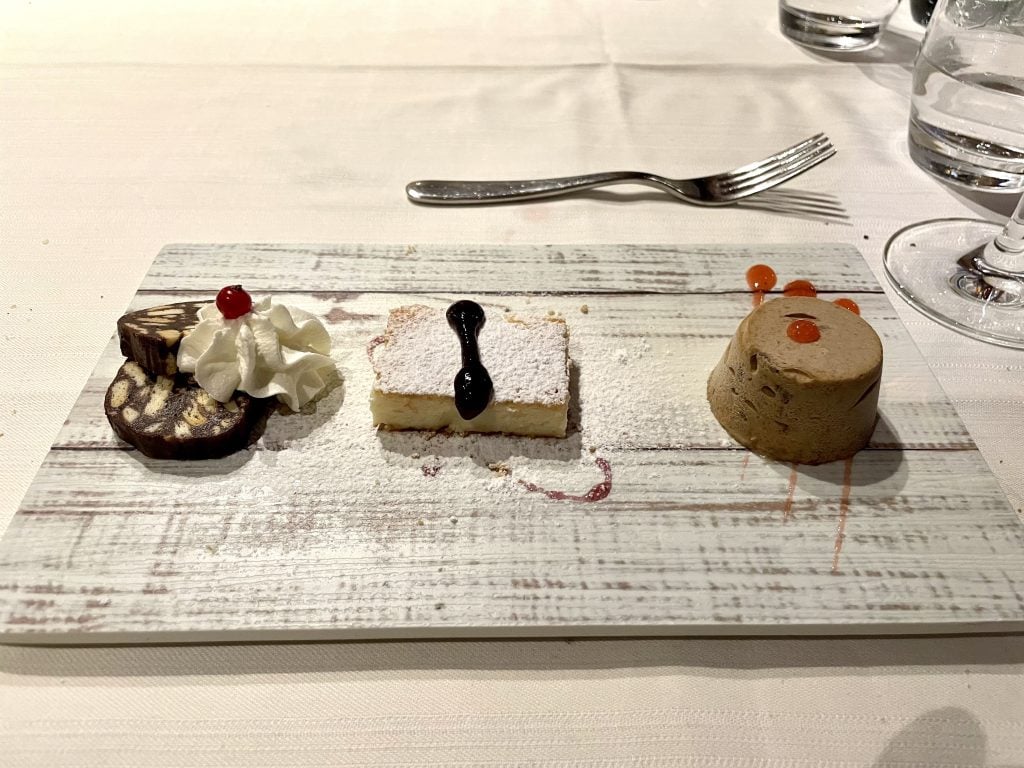

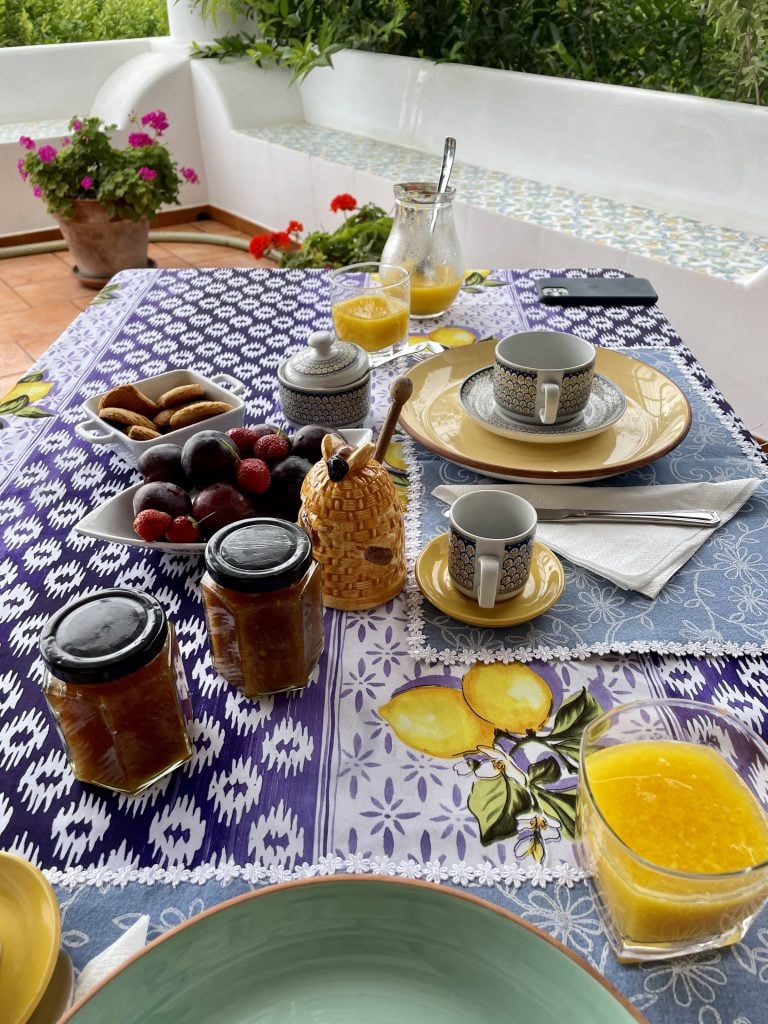
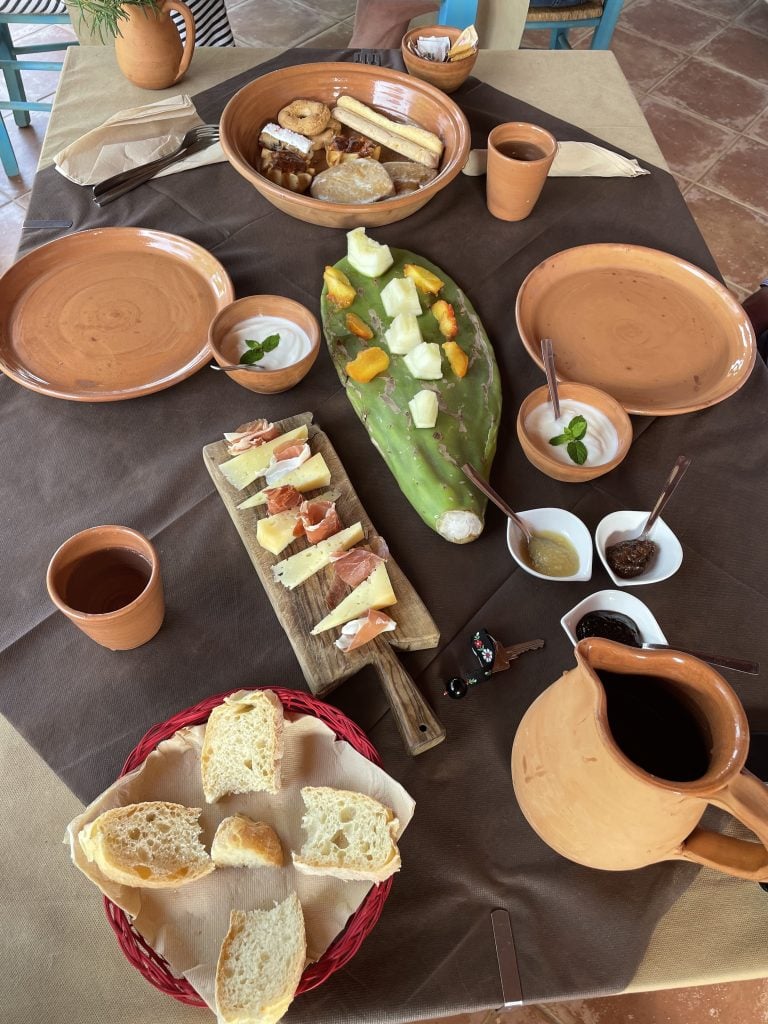
Agriturismo Accommodations
Italian accommodations tend to be on the simple side, and that goes for agriturismi as well. They give you what you need, and often not much more than that.
But that’s fine! You’ll have everything you need.
One big tip — pillows in Italy tend to be very flat. Nowadays, every time I travel to Italy, I bring a travel contour pillow (or full-sized pillow if we’re driving to Italy). It’s good to have. But every now and then, an agriturismo surprises me with a nice puffy pillow!
Here are some of the agriturismo rooms where I’ve stayed:
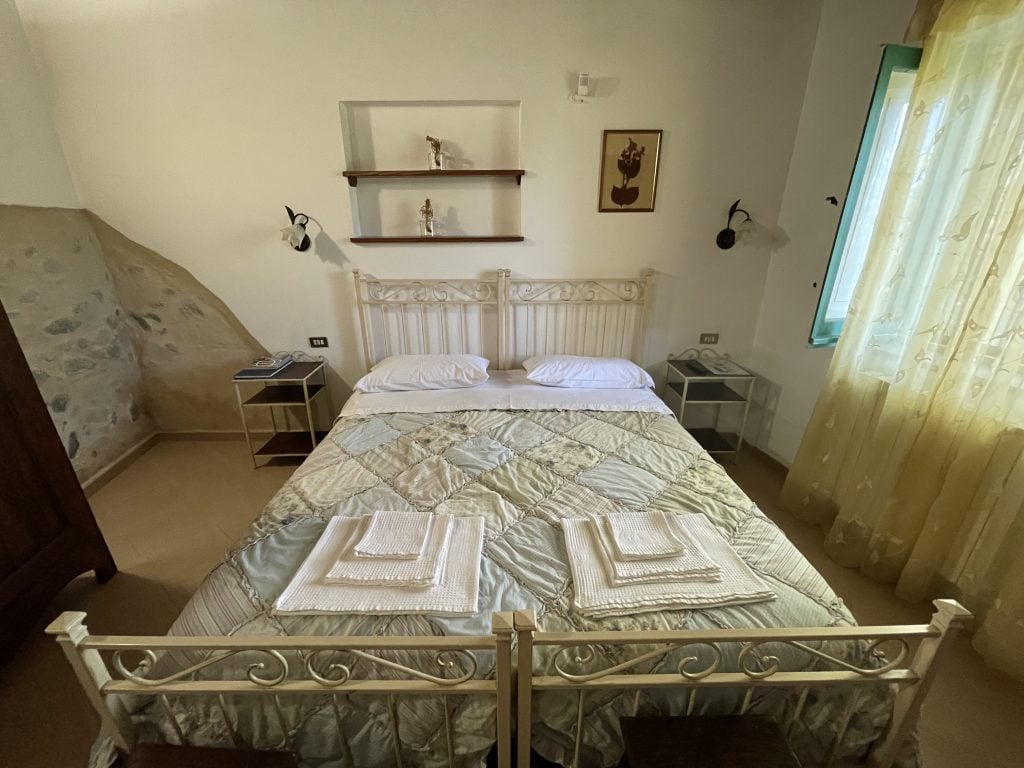
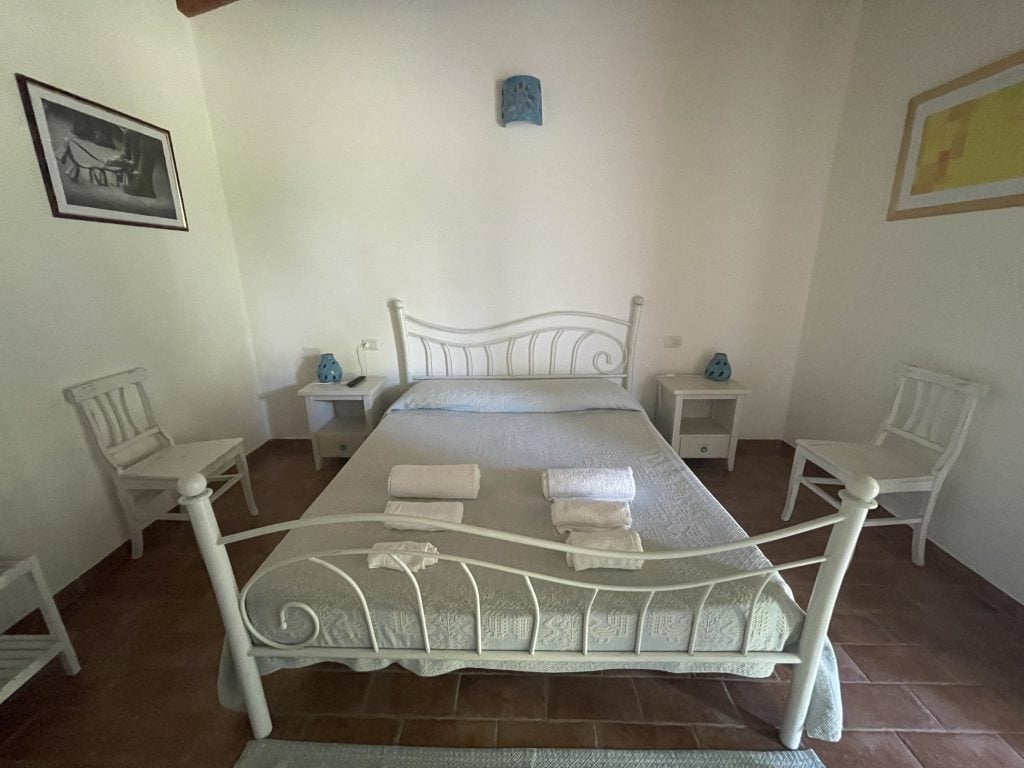
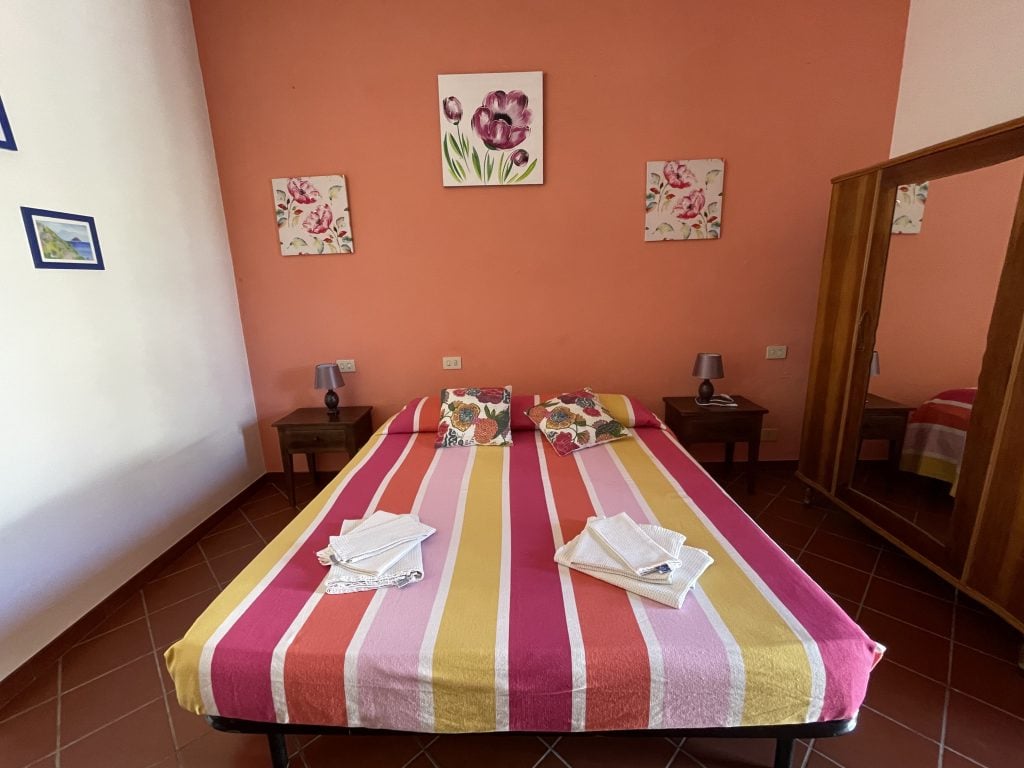
What to Do at an Agriturismo
What do you do at an agriturismo, anyway? Honestly, it’s completely up to you.
Some agriturismi have activities that you can book in advance, like wine tasting, food tasting, or horseback riding. Some have bicycles or scooters that you can rent to explore the area.
Sometimes an agriturismi will welcome you to help out in the vegetable garden if you’d like.
And you can just hang out, spending time in the pool or reading a book outside. There’s nothing wrong with that — that’s a big reason why people stay at agriturismi! For the peace and quiet.
Here are a few things I’ve done while staying at an agriturismo:
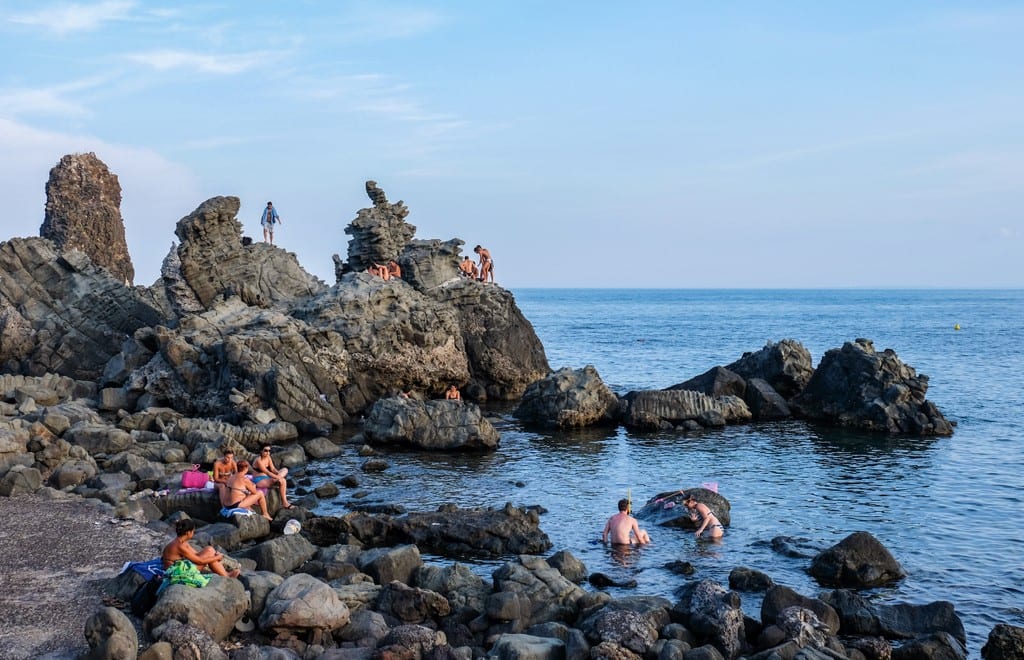

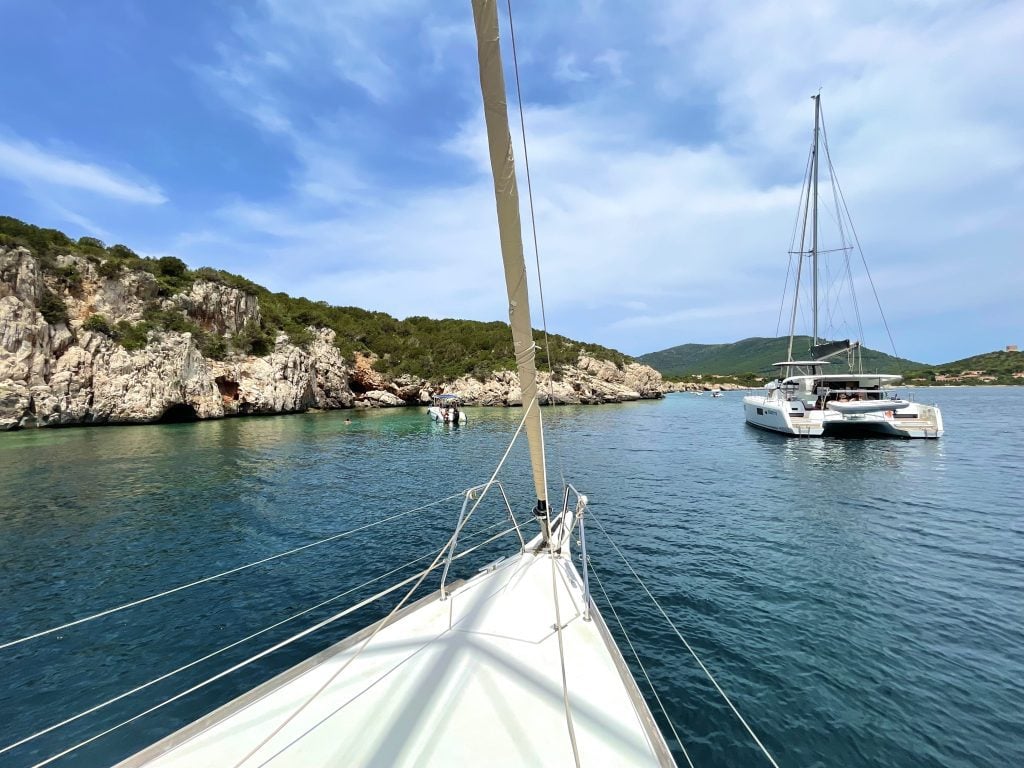
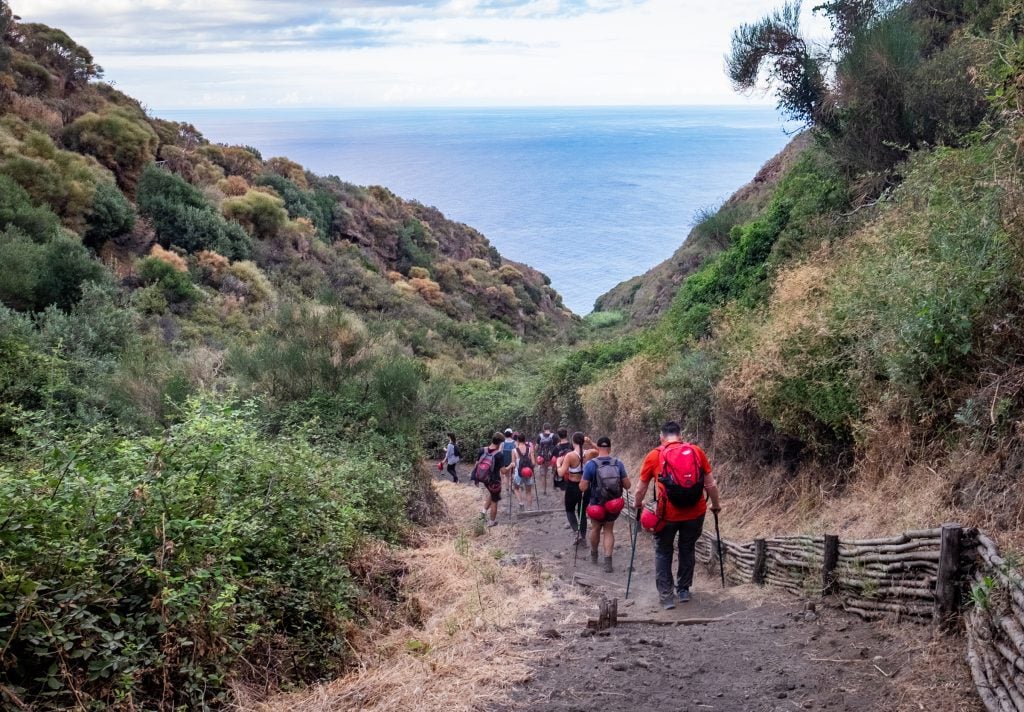
Figure Out Transportation
In most cases, you’ll need to have a car to visit an agriturismo properly. These farmstays are located in rural areas, usually far from any form of public transportation.
But you shouldn’t let that hold you back! Driving in Italy is not as scary as many people think. It’s not like you’ll be driving somewhere like Naples, where drivers refuse to follow the laws of physics — this is calm, beautiful, rural driving.
Keep in mind that while roads tend to be quiet in rural Italy, they can also be small. Many times in southern Italy especially, I’ve ended up on a one-way dirt road where you need to be super careful when squeezing by other cars!
Google Maps doesn’t always give you the best route, so be sure to double-check with your agriturismo.
And here’s something travelers often overlook — you don’t need to rent a car for your entire Italy trip, just part of it! Say you’re doing the typical Rome-Florence-Venice itinerary. Spend a few days in Rome, take the train to Florence, spend a few days in Florence, rent a car for a few days and drive around the Tuscan countryside while staying at an agriturismo and enjoying the rural lifestyle, return your car, then take the train to Venice.
I think this is a great idea because you can keep the driving limited to the gorgeous rolling hills of Tuscany — and avoid driving in cities, which is always a huge pain (parking is the WORST).
Can you stay at an agriturismo if you don’t have a car? It IS possible — but usually a bit of a hassle. Occasionally, you’ll find an agriturismo close to public transportation, but keep in mind that in rural areas, that bus might only run once every three hours.
Sometimes agriturismi offer pickups from local train stations; at other times, you can take a taxi (Uber is available in many Italian cities but rare in rural areas).
If you choose to stay at an agriturismo without a car, double-check when the agriturismo serves food. If you want to spend a day lounging at the property, double-check that they serve lunch, or else you’ll be running on fumes until dinner!
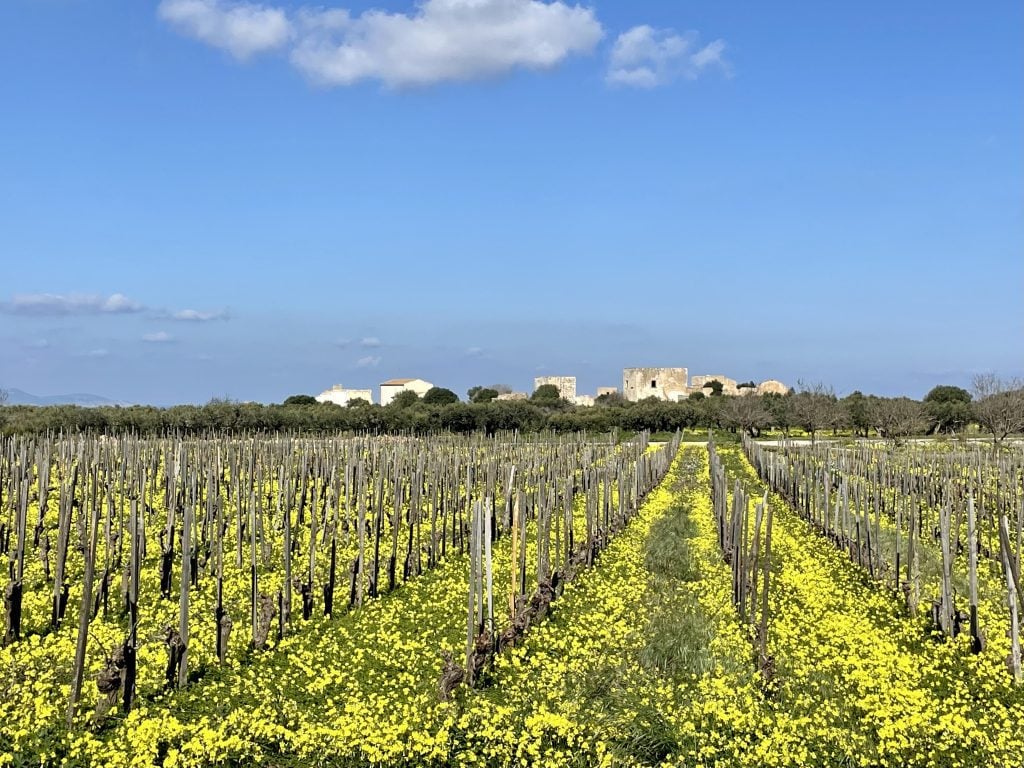
Agriturismo Travel Tips
Here are some of my top tips for staying at an agriturismo in Italy:
Research the area before you go and put together a list of priorities to visit before you arrive. And keep in mind that many Italian regions are HUGE. Tuscany is massive, for example, and it takes hours to drive from one end of the region to another. Instead, focus on a smaller part of Tuscany, closer to your agriturismo.
And on my latest trip to Sicily, it felt like we drove over the whole island — but we were just in the westernmost province of Trapani, a tiny chunk of Sicily itself! And there were tons of cool small towns to visit there!
Ask the agriturismo staff for recommendations. They know the area better than anywhere else! When I stayed at Agriturismo La Rocca delle Rose near Mount Etna in Sicily, they suggested we spend a beach day at Aci Trezza, which became one of the highlights of our trip.
Agriturismi folks are knowledgeable about towns worth visiting, hiking routes, things to do, good nearby restaurants (especially if the agriturismo doesn’t serve lunch), and places you won’t find in any blog or guidebook.
Don’t expect great phone signal or wifi. Often agriturismi are located in phone signal dead zones with a single router providing wifi in common areas only. Many people take this as an excuse to relax.
If you require wifi for work or FaceTime calls home to your family, make sure you talk to the agriturismo in advance to verify it’s enough for your needs.
Know that there may be a language barrier. These days, there’s usually at least one person at the agriturismo who speaks a bit of English (often, one spouse speaks great English and the other speaks almost no English!), but in more remote places, you may struggle.
One challenge for me was Agriturismo Sardo in Santa Teresa Gallura, Sardinia. At first I emailed them, but they stopped answering emails, so I tried calling, nobody spoke English, my broken Italian was awful, and I had to enlist an Italian-speaking friend to call them for me! (The food was SO worth it, though.)
Be ready for hiccups. When we arrived at one agriturismo, nobody was there to greet us! We ended up hanging out for an hour on the outdoor patio and patting their dogs and cats until someone came home to let us in. At another agriturismo, we had a plumbing issue, which isn’t uncommon in the Italian countryside.
Just be ready to go with the flow.
If you have dietary restrictions, let the agriturismo know in advance. I recommend telling them right when you book and reminding them again shortly before you arrive. Italians are happy to accommodate people with food allergies.
If your dietary restrictions are particularly challenging, you might want to email them in advance to discuss if they can work with your needs.
If you’re a vegetarian or vegan, you’ll have an easier time in Puglia or Sicily, two regions that have extensive plant-based options (though admittedly it’s much easier to find vegetarian dishes than vegan dishes).
And know that Italians know how to deal with gluten-free dining. All children in Italy are tested for celiac disease, so Italians are very familiar with what it entails. One agriturismo in Umbria served my celiac friend Jodi a bowl of sliced cherry tomatoes topped in the pasta sauce!
Consider your luggage allowance and souvenirs. Agriturismi often sell their own local products: digestivi, olive oil, sauces, wines, and other liquids. If you want to bring them home, you’ll need to pay for checked luggage for the flight home.
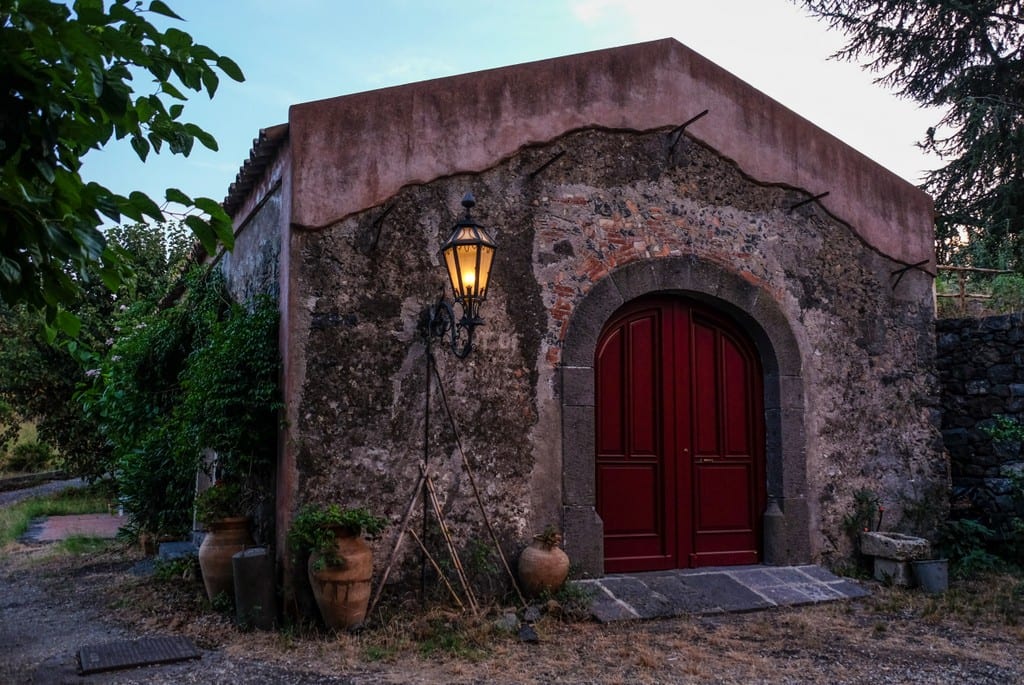
Agriturismi I Recommend
I’ve listed several agriturismi I’ve stayed at in this post, and I’d be happy to stay at any of them again.
But here are some that I think are extra special:
Agriturismo Sardo in Santa Teresa Gallura, Sardinia — You’ll have to call or email them directly, and there’s a language barrier, but they will serve you the biggest, most insane multi-course Sardinian feast you’ve ever had. I’m talking THREE primi dishes and a roasted pig.
Agriturismo La Rocca delle Rose in Zafferana Etnea, Sicily — A wonderful family-run agriturismo in the shade of Mount Etna — a perfect location for exploring Eastern Sicily. Beautiful grounds, a nice pool, delicious meals, and a welcoming family who will help you feel at home.
Poggio delle Rose in Chianciano Terme, Tuscany — Wonderful staff, fantastic food, a view you’ll never forget, and an excellent location for visiting Southern Tuscany and even a bit of Umbria if you’d like, though not in a tourism-overwhelmed town.
Agriturismo Il Cucchiaio di Legno in Orta San Giulio, Piemonte — I’m including this because this is one of my favorite restaurants IN THE WORLD. However, their accommodation leaves a bit to be desired and is right next to the train tracks (super-loud). Definitely make a dinner reservation ahead of time, get the well-priced tasting menu, and sample the Barolo.
That said, keep in mind that you need to find the agriturismo that works best for YOU. Your personality, your travel needs, the foods you’re looking forward to eating.
The good news is that there are so many agriturismi all over Italy, you won’t have trouble finding the perfect one for you.
Planning a Trip to Italy:
- What NOT to Do in Italy
- Solo Female Travel in Italy: Is it Safe?
- Ultimate Guide to Driving in Italy
- 30 Stunning Mediterranean Islands To Visit In Your Lifetime
- 30 Italian Cities To Visit Once In Your Lifetime
Cool Places in Northern Italy:
- Three Weeks in Northern Italy: An Itinerary
- Parma, Italy: A Colorful, Artsy, Delicious Town
- Where to Stay in Rome: Best Neighborhoods and Accommodation
- Three Days in the Dolomites: A South Tyrol Getaway
- Best Day Trips from Florence, Italy
- The Immaculate, Bursting Mosaics of Ravenna, Italy
- 25 Best Food Experiences in Emilia-Romagna, Italy
- 23 Best Things to Do in Bologna, Italy
Cool Places in Southern Italy:
- 22 Best Places to Visit in Sicily
- The Joys and Challenges of Traveling in Sicily
- Where to Go in Eastern Sicily
- Complete Guide to the Aeolian Islands, Sicily
- Aci Trezza: A Laid-Back Coastal Town in Sicily
- Tropea, Italy: A Spectacularly Situated Beach Tow
- The Stunning Trulli of Alberobello, Italy
- 16 Fun Things To Do In Sorrento
- 17 Fun Things to do in Bari, Italy
- 16 Fab Things to do in Lecce, Italy
- 15 Best Things to do in Monopoli, Italy
- 17 Fun Things to do in Matera, Italy

Have you been to an agriturismo? What tips do you have?
Very interesting read, îm sold to agrotourismo! I was wondering if you have one to recommend near bologna for a more typical/familial feeling than isola del sasso? We want to go to eat and drink well, and make day trips to bologna,modene,parma.
Thanks,
Not off the top of my head — but check out all the links I recommended that will help you find agriturismi in the area!